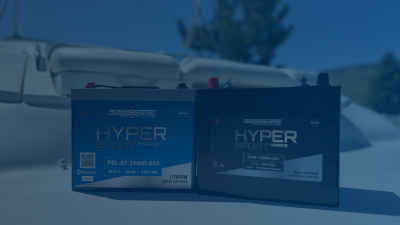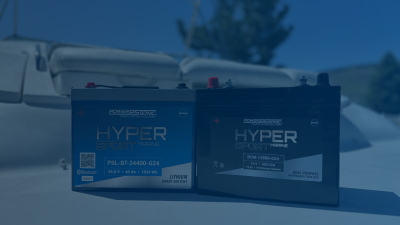How To Charge Lithium Iron Phosphate (LiFePO4) Batteries
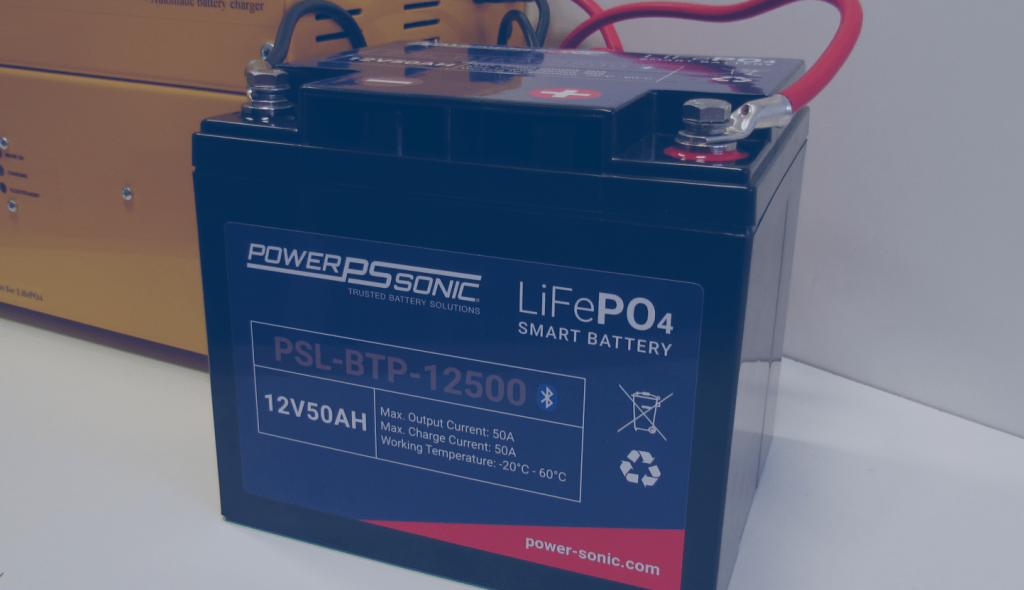
If you’re exploring lithium iron phosphate (LiFePO4) batteries, you know they offer more cycles, consistent power, and lower weight than comparable SLA batteries—and they can charge up to four times faster. But how exactly do you charge a lithium battery?
Power Sonic recommends you select a charger designed for the chemistry of your battery. This means we recommend using a lithium charger, like the LiFe Charger Series from Power Sonic, when charging lithium batteries.
CAN A LEAD ACID CHARGER CHARGE A LITHIUM BATTERY?
As you will learn in this blog, there are many similarities in the charging profiles of SLA and lithium. However, extra caution should be exercised when using SLA chargers to charge lithium batteries as they can damage, under charge, or reduce the capacity of the lithium battery over time. There are many differences when comparing lithium and SLA batteries.
SEALED LEAD ACID (SLA) BATTERY CHARGING PROFILE
Let’s go back to the basics of how to charge a sealed lead acid battery. The most common charging method is a three-stage approach: the initial charge (constant current), the saturation topping charge (constant voltage), and the float charge.
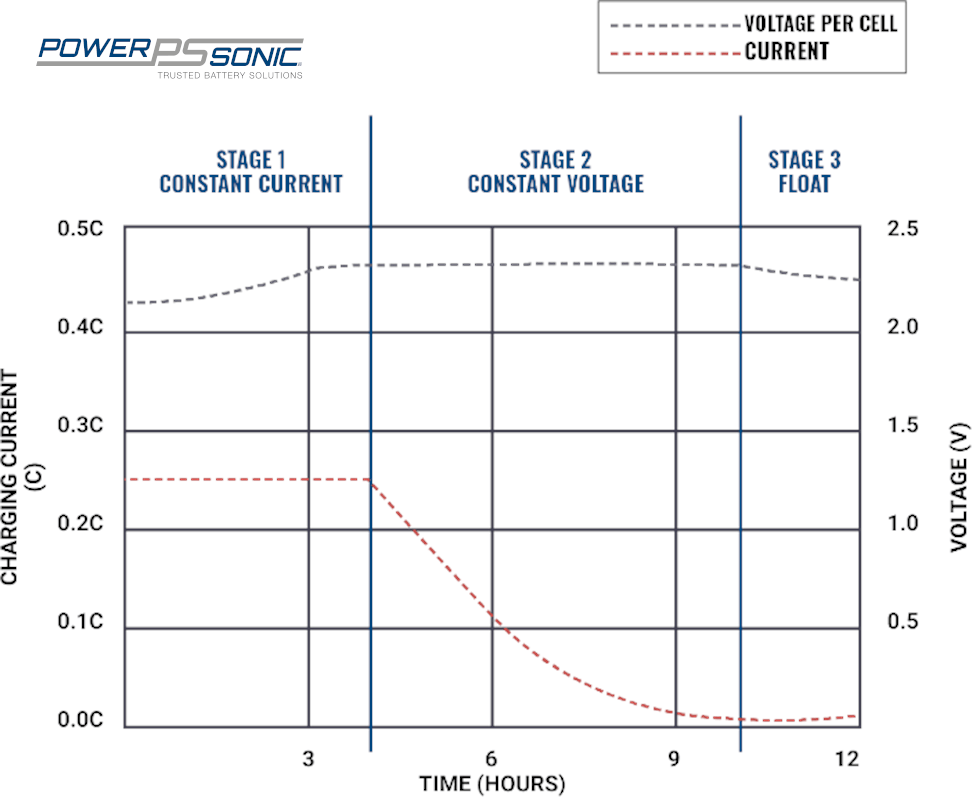
In Stage 1, as shown above, the current is limited to avoid damage to the battery. The rate of change in voltage continually changes during Stage 1 eventually beginning to plateau when the full charge voltage limit is approached. The constant current/Stage 1 portion of the charge is crucial before moving onto the next stage. Stage 1 charging is typically done at 10%-30% (0.1C to 0.3C) current of the capacity rating of the battery or less.
Stage 2, constant voltage, begins when the voltage reaches the voltage limit (14.7V for fast charging SLA batteries, 14.4V for most others). During this stage, the current draw gradually decreases as the topping charge of the battery continues. This stage terminates when the current falls below 5% of the battery’s rated capacity. The last stage, the float charge, is necessary to keep the battery from self-discharging and losing capacity.
Stage 3, or float charging, maintains full capacity in standby or storage applications. For SLA batteries, it prevents sulfating and protects the plates by keeping the battery at 100% SOC.
LIFEPO4 BATTERY CHARGING PROFILE
A LiFePO4 battery uses the same constant current and constant voltage stages as the SLA battery. Even though these two stages are similar and perform the same function, the advantage of the LiFePO4 battery is that the rate of charge can be much higher, making the charge time much faster.
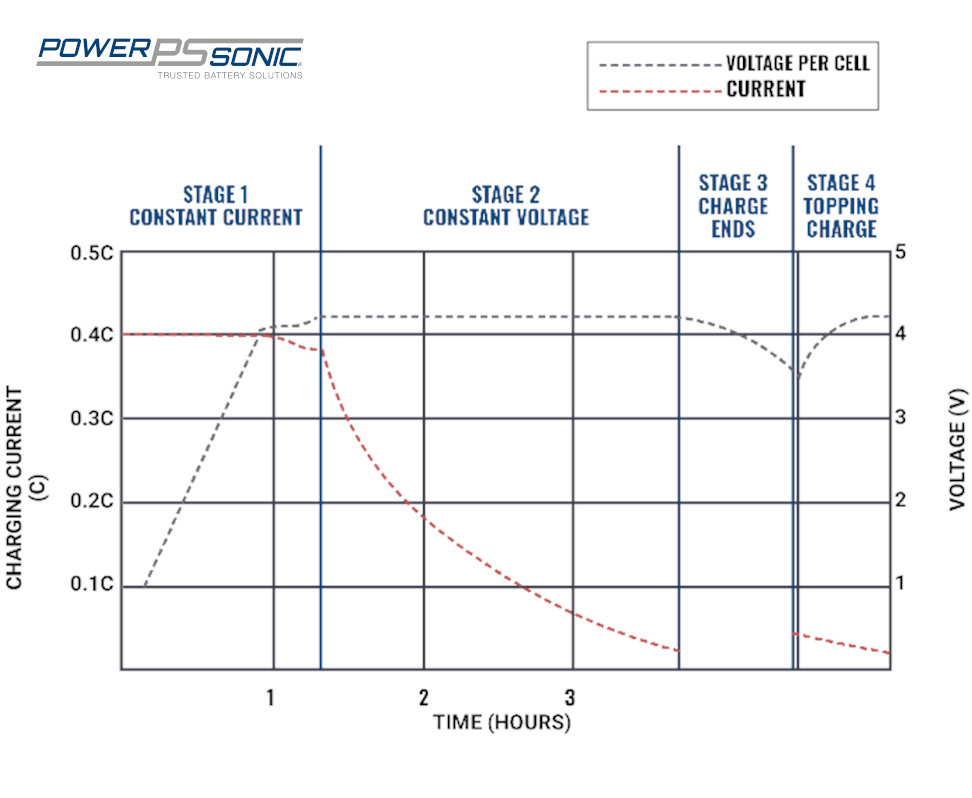
Stage 1 charging uses 0.3–1.0C of the battery’s capacity. SLA batteries take about four hours, while lithium batteries can reach full charge in as little as one hour—up to four times faster—even at just 0.5C.
Stage 2 completes the battery’s charge to 100% SOC. SLA batteries take six hours, while lithium batteries take as little as 15 minutes. Overall, lithium charges in four hours versus SLA’s 10, allowing multiple daily cycles compared to SLA’s single cycle.
Where they become different in charging profiles is Stage 3. A lithium battery does not need a float charge like lead acid. In long-term storage applications, a lithium battery should not be stored at 100% SOC, and therefore can be maintained with a full cycle (charged and discharged) once every 6 – 12 months and then storage charged to only 50% SoC.
In standby applications, lithium’s low self-discharge lets it retain nearly full capacity for 6–12 months without charging. For longer storage, use a voltage-based topping charge—especially for Bluetooth batteries, where the module draws a small current even when idle.
LITHIUM BATTERY CHARGING CHARACTERISTICS
Voltage and current settings during charging
A 12 V SLA battery has a full-charge OCV of ~13.1 V, while a 12 V lithium battery is ~13.6 V. Batteries sustain damage only if the applied voltage significantly exceeds their full-charge OCV.
Keep SLA Stage 2 charging below 14.7 V and lithium below 15 V. Float charging (~13.8 V) is required only for SLA. A voltage range of 13.8–14.7 V safely charges either battery. Choose a charger that stays within these limits.
Charge current depends on battery capacity: lithium can charge up to 1C, SLA below 0.3C (e.g., 10 AH lithium = 10 A, 10 AH SLA = 3 A). Cutoff current is 5% of capacity (0.5 A for both).
Universal chargers allow chemistry selection, setting optimal voltage and determining full charge: lithium chargers shut off automatically, SLA chargers switch to float mode.
Lithium batteries replacing sealed lead acid in float applications
It’s common to replace SLA batteries with lithium in applications like UPS systems, raising safety concerns. You can safely use a standard constant-voltage SLA charger with our lithium batteries if it meets these conditions:
- No de-sulfating mode
- Fast/bulk charge voltage of 14.7 V
- Recommended float voltage of 13.8 V
Note: Some smart SLA chargers detect open-circuit voltage (OCV). An over-discharged lithium battery in protection mode shows near 0 V, which such chargers may interpret as dead and refuse to charge. Chargers with a lithium setting can recover or “wake up” these batteries.
Long term storage
Storage requirements differ for SLA and lithium batteries due to chemistry and self-discharge rates.
SLA batteries store best near 100% SOC to prevent sulfation, which reduces capacity, and require a float or trickle charge because of high self-discharge. Lithium batteries store best near 50% SOC to maintain terminal stability and minimize capacity loss, and their low self-discharge allows for minimal maintenance charging. For detailed guidance, see our lithium battery storage guide.
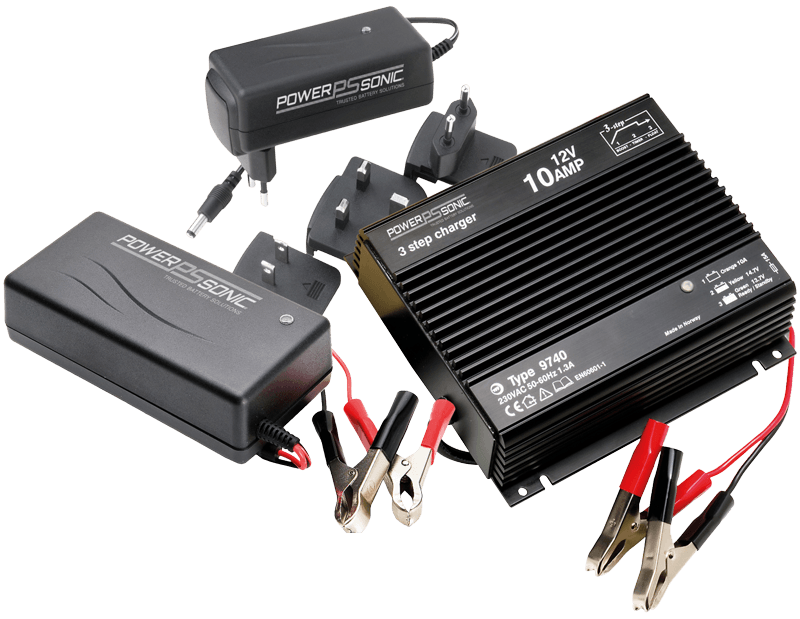
Recommended battery chargers
Always match your charger to the battery’s voltage and current—for example, don’t use a 24 V charger on a 12 V battery. Use a charger suited to your battery chemistry, and if using an SLA charger with lithium, ensure it lacks desulfation or dead battery modes.
For questions about charger compatibility with our products, call or email us—we’re happy to help.

